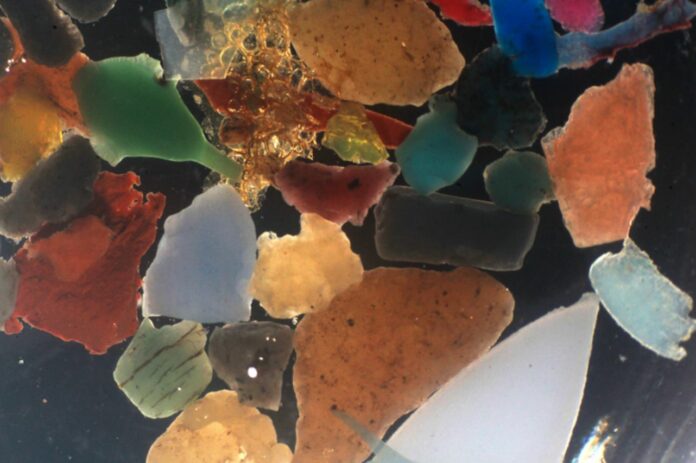Rhodococcus ruber is a bacteria that consumes and digests plastic. This was shown in the laboratory by PhD candidate Maaike Goudriaan at Royal Netherlands Institute for Sea Research (NIOZ).
Goudriaan figured out that bacteria can turn about 1% of the plastic they are fed into CO2 and other harmless substances per year based on a model study he did in the lab with plastic in artificial seawater.
“But, this is certainly not a solution to the problem of the plastic soup in our oceans. It is, however, another part of the answer to the question of where all the ‘missing plastic’ in the oceans has gone,” adds Goudriaan.
Unique plastic
Goudriaan created a unique plastic containing a specific form of carbon (13C) for her experiments.
She exposed the plastic to UV light and then fed it to bacteria in a bottle of simulated seawater. The result was the conversion of the special carbon into CO2 above the water.
“The treatment with UV light was necessary because we already know that sunlight partially breaks down plastic into bite-sized chunks for bacteria,” adds the researcher.
The proof of the concept
“This is the first time we have proven in this way that bacteria actually digest plastic into CO2 and other molecules,” Goudriaan notes.
It was previously recognized that Rhodococcus ruber may build a so-called biofilm on plastic in the wild. Plastic has also been measured to vanish under that biofilm.
“But now we have really demonstrated that the bacteria actually digest the plastic.”
Underestimate
According to Goudriaan’s calculations of the total amount of plastic converted into CO2, the bacteria can degrade around 1% of the available plastic annually.
“That’s probably an underestimate,” she continues. “We only measured the amount of carbon-13 in CO2, so not in the other breakdown products of the plastic. There will certainly be 13C in several other molecules, but it’s hard to say what part of that was broken down by the UV light and what part was digested by the bacteria.”
No solution
Goudriaan emphasizes that microbial digestion is not a solution to the ongoing concern of all the plastic floating on and in our seas, despite her excitement about the plastic-eating bacteria.
“These experiments are mainly a proof of principle. I see it as one piece of the jigsaw, in the issue of where all the plastic that disappears into the oceans stays. If you try to trace all our waste, a lot of plastic is lost. Digestion by bacteria could possibly provide part of the explanation.”
Mudflats to laboratories
More study is needed to confirm whether or whether “wild” bacteria may also be found eating plastics in their natural habitats. Goudriaan has already done some test runs with real sea water and sediment she took from the bottom of the Wadden Sea.
“The first results of these experiments hints at plastic being degraded, even in nature,” she adds. “A new PhD student will have to continue that work. Ultimately, of course, you hope to calculate how much plastic in the oceans really is degraded by bacteria. But much better than cleaning up, is prevention. And only we humans can do that,” Goudriaan says.
The sun breaks up the plastic soup.
Annalisa Delre, a colleague of Goudriaan’s, recently released a research on how sunlight degrades plastic on ocean surfaces.
Floating microplastic breaks down into ever smaller, invisible nanoplastic particles that spread through the whole water column. It also breaks down into compounds that bacteria can then break down completely.
Experiments conducted at the laboratory of NIOZ on Texel demonstrate this.
Annalisa Delre, a PhD student, and her colleagues wrote in the latest issue of Marine Pollution Bulletin that this may be how about 2% of the plastic that can be seen floating on the ocean surface disappears each year.
“This may seem small, but year after year, this adds up. Our data show that sunlight could thus have degraded a substantial amount of all the floating plastic that has been littered into the oceans since the 1950s,” adds Delre.
Source: 10.1016/j.marpolbul.2022.114369
Image Credit: Getty
